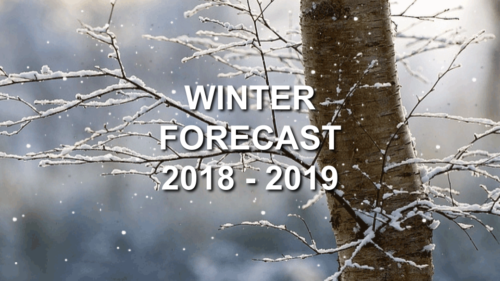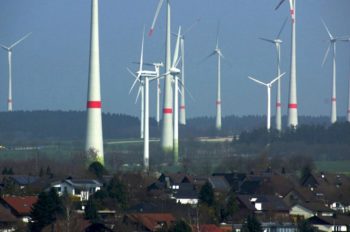It is this time of year again; the days are getting shorter, the nights are getting longer, growing season is almost over, and yes, it is getting colder. Yes indeed, winter is coming!
So, what can you expect this upcoming winter? How cold? How warm? How much snow? How wet? How dry? All of these questions will be answered.
KEY FACTORS:
- ENSO (El Niño Southern Oscillation)
- High Latitude Blocking + NAO and AO
- Analogs
- Solar Activity
EL NIÑO SOUTHERN OSCILLATION
The first thing our FirstWatch Weather team did was to look at the global sea surface temperatures.
Right now, they are looking slightly above average, but that is irrelevant. The main area of focus is in a region of the equatorial Pacific known as Niño 3.4.
You may have heard about El Niño and La Niña over the years. ENSO refers to the recurring natural phenomena which are a part of a large global atmospheric variation.
The “Southern Oscillation” refers to the changes in sea level air pressure patterns in the South Pacific, between Tahiti and Darwin, Australia.
When El Niño occurs, the average air pressure is higher in Darwin, than in Tahiti, and when the air pressure is lower in Darwin than in Tahiti, we are in La Niña.
The change in air pressures in the South Pacific and water temperature in the Equatorial Pacific are related. El Niño simply refers to the water temperature in the Equatorial Pacific Ocean.
When the conditions are warmer than average, we call this El Niño, and cooler for La Niña.
Currently, Niño 3.4 is about 0.5°C above average in terms of sea surface temperature, which means we are in an El Niño phase.
However, there are different types of El Niño’s (and La Niña’s). There are weak, moderate, strong, and very strong ones.
Since the Niño 3.4 region is 0.5°C above average, that means we are in a weak El Niño, pushing toward moderate, which is referred to as a Modoki El Niño in meteorology.
It is also worth noting that we also know we are in a Modoki El Niño because the waters right off the coast of South America are cooler than average.
So, what does a typical El Niño look like in terms of weather patterns? Well, for the northwest and upper northeast U.S., temperatures are generally warmer than normal with drier than average conditions, while temperatures in the south and southeast are cooler with wetter than average conditions.
However, we FirstWatch forecasters think that this map is total garbage in terms of its projected temperature due to the warm phase of ENSO.
We have come to the agreement that El Niño simply increases the amount of evaporation, thus causing snowy winters for the eastern U.S.
This increase in evaporation likely has little or no effect on temperatures if and only if it is a weak, Modoki, or moderate El Niño.
However, it is important to note that almost every single Modoki El Niño has resulted in cold winters; remember 2002-2003 and 2009-2010.
HIGH LATITUDE BLOCKING
Another particular area of focus in the Pacific is the North Pacific, right off the coast of Alaska.
As you can clearly see, the temperatures there are well above average, which is signaling high latitude high-pressure blocking.
High-pressure blocking in high latitudes is a very good sign of a cold winter to come, especially with an Alaska block and a Greenland block.
It looks, as of right now, that an Alaska block is forming and a Greenland block is trying to form.
If this does happen, the jet stream branches southward into the states as well as plunging south in Europe, sending them into a deep freeze as well.
Furthermore, with this high latitude blocking, the North Atlantic Oscillation (NAO) and Arctic Oscillation (AO) turn negative, which typically has produced the same result; Arctic outbreaks and snowstorms for the U.S. and Europe.
ANALOGS
Another important factor we looked at was analogs, which are historical references to past seasons to see how they matched up with the current season, in order to predict the winter (or any other season) ahead.
This season’s closest analogs are 1956-57, 1969-70, 1993-94, 2002-03, 2009-10, and 2014-15.
These winters turned out to have a warm fall preceding the winter that followed, which is what we have seen so far this year, in terms of temperatures.
Generally, over these particular years, the eastern two-thirds of the U.S. saw very cold temperatures and wetter conditions, while the west saw above average temperatures and drier conditions.
SOLAR ACTIVITY
Solar activity is a very important factor for the upcoming winter, in our opinion, as the Sun is the main driver of our climate, NOT CO2.
We are currently in a solar minimum, which means the Sun is at the bottom of its 11-year solar cycle, where the sunspots disappear and the magnetic poles flip.
Solar minimums tend to have a cooling effect on the Earth and usually aid in forming very cold and snowy winters by producing deep long-wave patterns in the jet stream.
It is important to note that while solar minimum tends to produce cold winters, such as 2002-03 and 2009-10, there are temperature extremes on both sides of the jet stream.
There is no explanation for the cause, but it is something that has been observed and stayed consistent over the years, which means that there will be warm-ups every now and then, and I wouldn’t rule out a mid-January thaw.
It is also interesting to note that many of the analog years we talked about earlier took place during solar minimums, so there is definitely something to this.
THE FINAL FORECAST
Overall, we think the U.S. is going to have a colder than average winter. The eastern two-thirds should have the coldest conditions with temperatures averaging about two to four degrees BELOW average, whereas the western-third of the U.S. will have temperatures between one and three degrees above average, especially the Pacific Northwest.
Snowfall amounts will vary, but all in all, we think it will be very snowy along the east coast and even possibly the Midwest.
The south and southeast may also have snowier than average conditions. The west, however, will stay relatively dry, especially in the Pacific Northwest.
California does have a chance of being above average in terms of precipitation, but it is borderline.
Learn more at FirstWatch Weather here.




























Thanks for posting Tom!